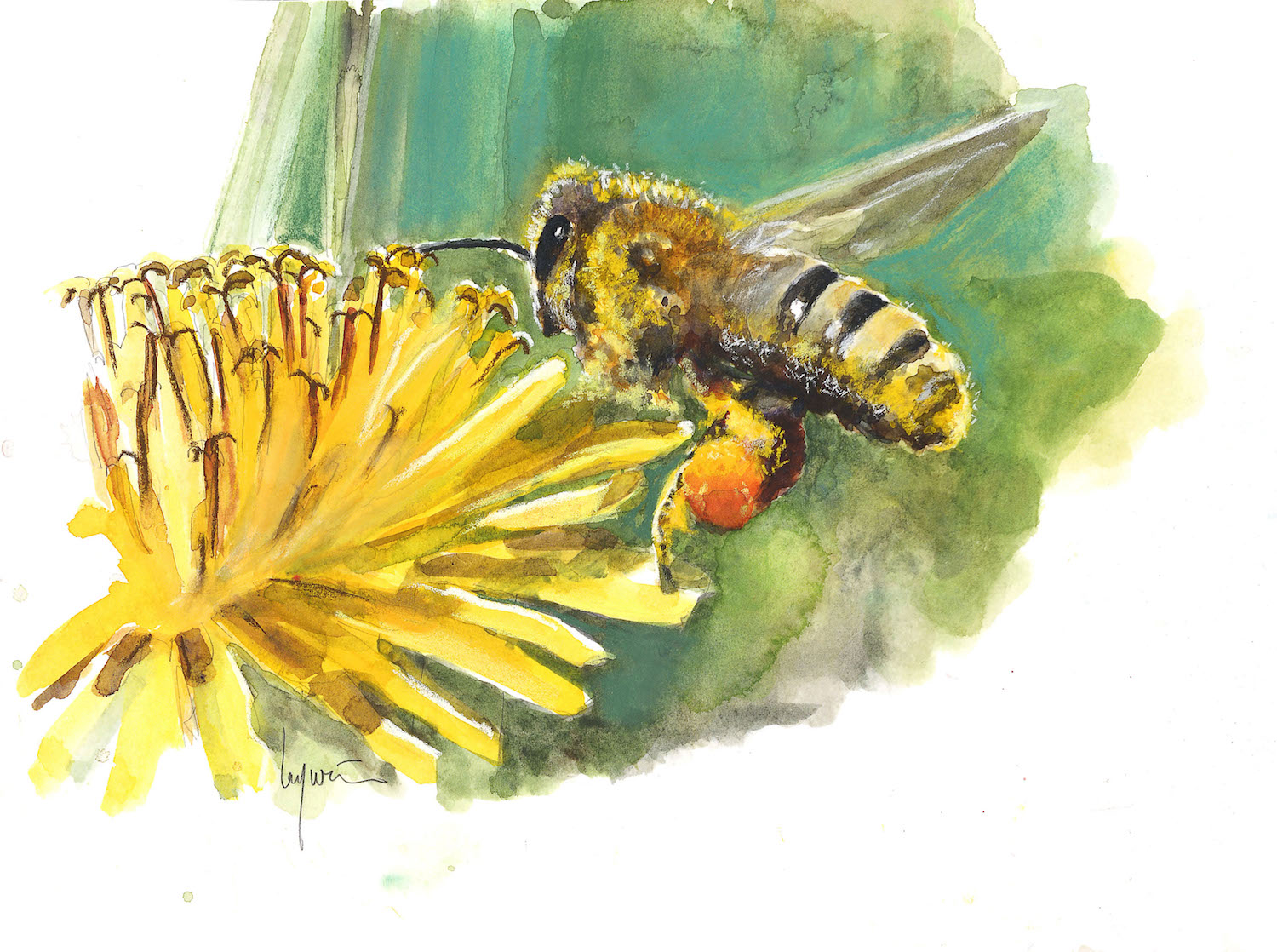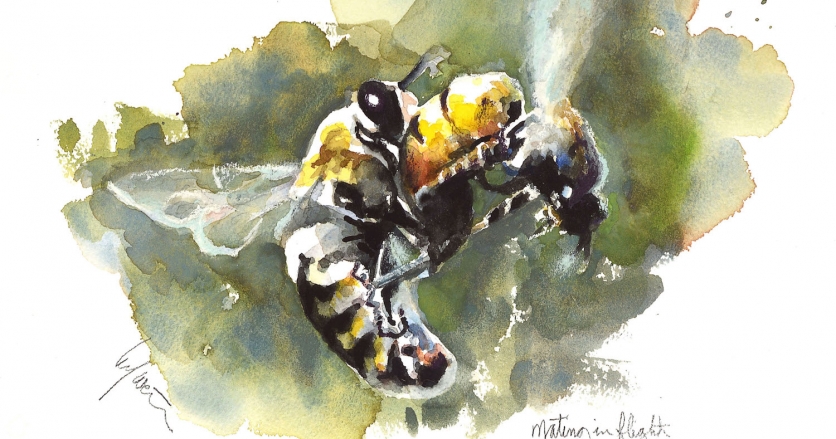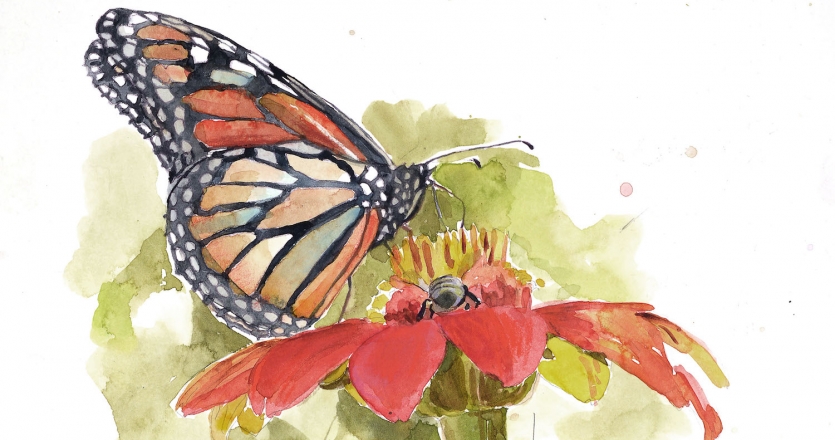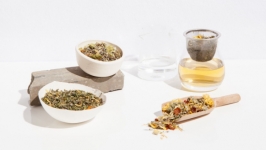The Virgin Queen's Nuptial Flight
The day a virgin queen honeybee prepares for her nuptial flight, the hive is abuzz with activity. Since she’s the only female in the hive with a fully developed reproductive system, today is very important. Workers groom and feed her, and when the time comes she struts out into the open air and takes flight. She flies high into the air, wafting out come-hither pheromones toward a drone congregation area, where male bees fly in circles, emitting their own alluring pheromones, waiting for this very occasion.
See, a male bee is good for just one thing.
In a honeybee hive, female bees, called workers, do all the work. They build the hive, guard it from intruders, forage for food, care for the young, clean the hive and dote on the queen. The male bees, called drones, are essentially freeloaders, taking up space and resources in the hive without helping—and the workers tolerate them… for awhile.
But today is the day male bees live for. As soon as they pick up the scent of a virgin queen from another hive, the chase is on. She flies as fast as she can and the drones race to chase her, ensuring that only the most fit males get a chance to mate with her. When a drone catches her, he mounts her in mid-air and after copulation his penis-like endophallus breaks off inside her and he falls to his death, trailing his entrails. Again, she flies as fast as she can to test the other males who are attempting to mate with her. The next male to reach her will remove the endophallus of the previous male before inserting his own, but he too will meet the same fate as his predecessor upon his exit.
A virgin queen will mate with many drones on her nuptial flight, then return to the hive exhausted and heavy with sperm. Her welcome from the workers is warmer the more drones she has mated with, as mating with more drones will better ensure the success of the hive. She’ll live out the rest of her life confined to the hive, laying eggs.
When a queen bee lays an egg, she can choose whether to lay a female or a male. If she wants to lay a female, she fertilizes the egg with the sperm she has stored inside her body. She can also lay an egg without fertilizing it with sperm, and it will grow into a male bee— a phenomenon called haplodiploidy. A male bee has half the chromosomes of a female, all of them coming from his mother. This means that he has a grandfather but no father, and he can have grandsons but not sons.
A queen bee can live for three years and can lay up to 2,000 eggs a day, fertilizing the females with sperm from that one nuptial flight. But even the best-mated, healthy queens will run low on sperm at some point, which means they’ll start laying a bunch of drone eggs. If you’re a worker bee, a bunch more non-contributing mouths to feed isn’t good. In fact, in late summer as temperatures cool and workers prepare to hunker the hive down for the winter, it’s not uncommon to see throngs of aimlessly wandering drones crawling around in front of a hive entrance, having been kicked out of their home by the workers. When workers notice a queen has started laying too many drone eggs, they can decide to raise a new queen to replace the old one. Or, even if the old queen is healthy, they may raise a new queen and send the old queen out to start a new colony.
They build special cells that dangle from the hive frames like peanut shells, and feed the developing larvae inside high-quality rations called royal jelly, so they develop into queens with full reproductive systems instead of ordinary workers.
When the first new queen emerges, chewing her way out of her peanut-like brood cell, she goes on a rampage, seeking out any other developing queens and killing them by stabbing them with her stinger-ovipositor through their brood cell walls. If the old queen is failing, the workers will destroy her. But if the old queen is still vigorous, the workers will encourage her to leave the hive; if she agrees, up to half of them will follow her in a swarm to find a new place to live.
Now alone as the sole queen in the hive, this new virgin will eat and grow until the day of her own nuptial flight, and the cycle begins again.







